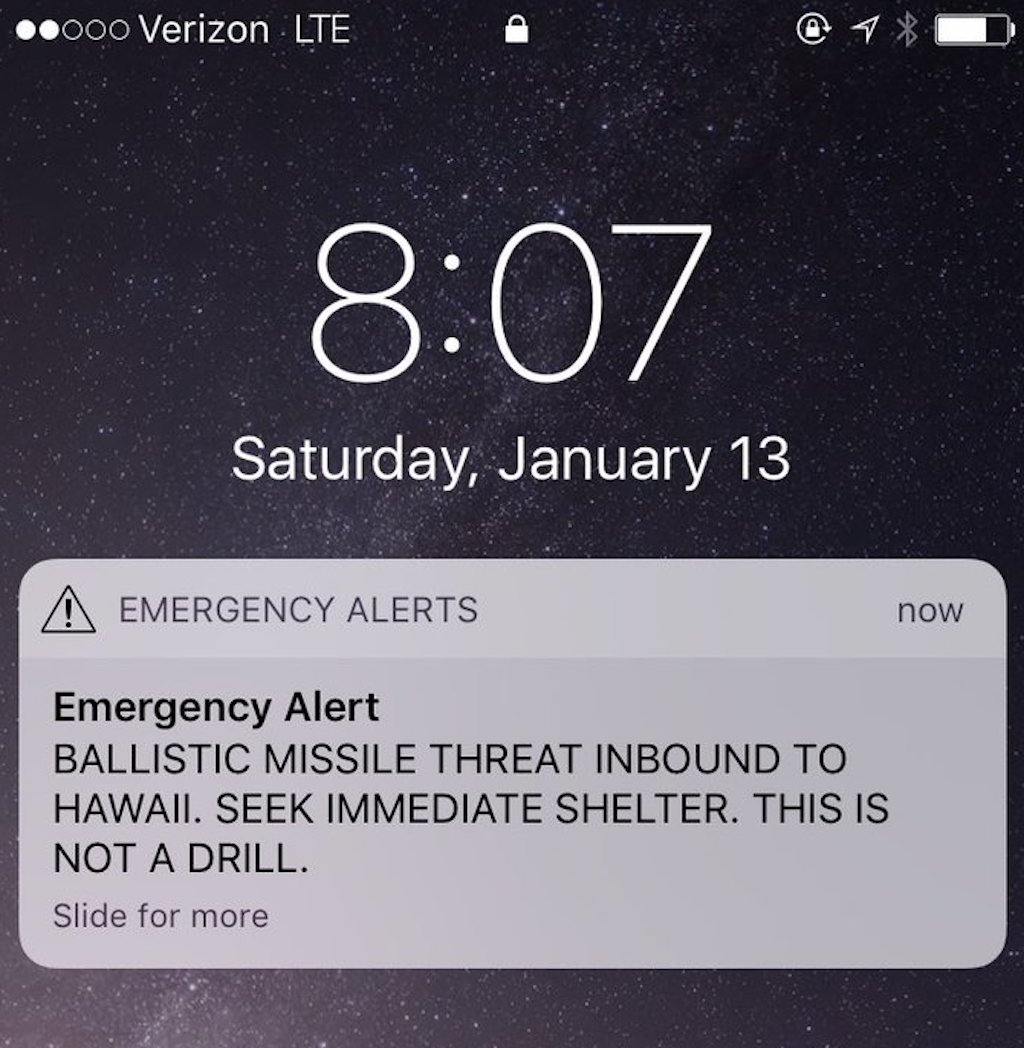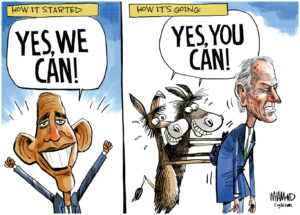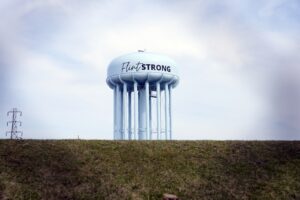What If the Text Alert in Hawaii Had Been Real?
Dispatching text message alerts of actual incoming nuclear missiles might do more harm than good. A screen shot showing the "false alarm" missile warning for Hawaii. (Rep. Tulsi Gabbard / Twitter)
A screen shot showing the "false alarm" missile warning for Hawaii. (Rep. Tulsi Gabbard / Twitter)
Did you know that you would receive a text message if the button was pushed, the apocalypse was nigh and nuclear doom was en route? Mudslides and tsunamis and Amber Alerts, sure. But an Armageddon Alert?
I didn’t. I bet most Hawaiians didn’t. But last Saturday morning, virtually everyone in Hawaii—residents and tourists alike—received this text message: “Ballistic missile threat inbound to Hawaii. Seek immediate shelter. This is not a drill.” (Surely at least a few of the out-of-towners thought, “Well, at least no one back home will be able to top this horrible vacation story.”)
It turned out to be a human error by a local emergency management official, clicking on the wrong option on a drop-down computer menu. Who among us hasn’t done that? But the explanation raises far more questions than it answers.
Do other American cities and states have similar plans to let us know in advance that The Bomb is headed our way? New York? Los Angeles? Vulture City, Ariz.? I have been trying to fight my 24/7 perpetual connection and social media addiction (not always successfully) by turning off my phone in the evenings. Do I need to rethink that now?
In addition, the event raises the possibility of a future false alarm scenario initiated by malevolent hackers. For all we know, some may have just gotten the idea. And some may be able to infiltrate the networks of more than just local civic authorities.
After all, hackers have proved themselves capable of getting into the computer systems of Sony Pictures, the Democratic National Committee (allegedly), Ashley Madison, Equifax and the federal Office of Personnel Management. Why not North American Aerospace Defense Command (NORAD), or the nuclear Strategic Command headquarters just south of Omaha, Neb., or the U.S. Navy Atlantic Fleet Submarine Forces Command in Norfolk, Va.?
Could such hackers somehow move the worldwide American nuclear complex to swing into action? Remember that, for decades now, the official American nuclear policy has been to “launch on warning” or “launch under attack”—while enemy ballistic missiles are “inbound”—to prevent the destruction of our intercontinental ballistic missiles (ICBMs) in their silos.
And if The Bomb is, in fact, headed toward your fair city, exactly where and how are you supposed to “seek immediate shelter”? And why? Yes, if you are far enough away from the hypocenter of the nuclear detonation, being indoors may reduce your exposure to radioactive fallout. But if you are closer, any building will either collapse upon you or be engulfed in the great firestorm generated by any nuclear blast in an urban area, incinerating everything within (depending on the weapon’s “yield”) dozens—or even hundreds—of square miles.
I live in Washington, D.C., SW, maybe a mile and a half due south of the United States Capitol. So I’ve been thinking about what I would have done had I received exactly the same text message on Saturday morning as did my fellow citizens in Hawaii. I know the Capitol might well be ground zero. The “ballistic missile threat inbound” might still be 30 or 40 minutes away. All my instincts tell me that instead of heading to the basement of my high rise, I should head instead to my car, jump on the 295 South, and drive considerably above the speed limit to get as far away as I can, as fast as I can, from the center of Washington.
Of course, one doesn’t have to be a “very stable genius” to come to this conclusion, which probably means that most of my neighbors would head off in the same direction. At best, this would mean we’d all be driving considerably below the speed limit. More likely, it would mean multiple traffic accidents slowing things down even further, and full-scale panic on the highway.
This is why “nuclear use theorists” (whom one can hardly resist identifying by the acronym NUTs) have long debated whether it would make sense to give any kind of warning of an impending atomic attack at all. In the 1962 book “Fail Safe” by Eugene Burdick and Harvey Wheeler, made into a 1964 film by Sidney Lumet and Walter Bernstein, the U.S. president, played in the film by Henry Fonda, decides against warning the people of New York that two 20 megaton hydrogen bombs are headed their way, concluding that it would do little to limit the devastation but would indeed “create panic.” (These bombs are about to be delivered upon an American city by American bombers—and if you don’t think that’s plausible, go buy the book or watch the movie right now.)
Perhaps it would be somehow “more humane” to allow people to gather with their loved ones and say their goodbyes—which many in Hawaii did do for 38 excruciating minutes last Saturday morning. But on balance, an emergency text alert of a genuine inbound nuclear missile might do more harm than good.
There are, of course, alternatives to these insoluble dilemmas.
Dial down the North Korean nuclear confrontation. Acknowledge that the North Korean state, like any sovereign state, will act to protect its own national security—in its case through a deliverable nuclear deterrent, the only possible means by which it might repulse an adversary possessing perhaps 1,000 times its military power.
End the infinitely provocative and completely unnecessary American and South Korean military exercises just miles from the North Korean border. (They are currently “postponed” until after the Winter Olympics next month in South Korea.)
Stop the American president from trying to humiliate the leader of a nuclear-armed adversary nation and tweeting about the size of his button.
Pursue a peace treaty to finally bring an end to the Korean War started in 1950—more than two-thirds of a century ago—that will promise to abjure “regime change” and provide meaningful security guarantees to Pyongyang.
And help both Pyongyang and Seoul work together toward a unified Korea. (The proposal for a unified Korean Olympic women’s hockey team in PyeongChang next month would be a great start.)
Oh, and after that?
Cancel both the Barack Obama-era, 30-year nuclear modernization plan (currently ringing up the military-industrial-complex cash register at $1.2 trillion) and the 2018 Trump plans to build new “low yield” nuclear warheads to “enhance deterrence.”
Sign on to the new Treaty on the Prohibition of Nuclear Weapons, agreed upon last summer by 122 nations—for which the “International Campaign to Abolish Nuclear Weapons,” a network of hundreds of peace and disarmament organizations, was awarded the 2017 Nobel Peace Prize.
And then launch a formal multilateral process to discern the verification measures, enforcement mechanisms and global governance architectures we’re going to have to invent to someday bring about and perpetuate a world of nuclear zero.
“Inbound Nuclear Ban Treaty signed, ratified, now entering into force.”
Now there’s a text message I’d like to receive.
With an uncertain future and a new administration casting doubt on press freedoms, the danger is clear: The truth is at risk.
Now is the time to give. Your tax-deductible support allows us to dig deeper, delivering fearless investigative reporting and analysis that exposes what’s really happening — without compromise.
Stand with our courageous journalists. Donate today to protect a free press, uphold democracy and unearth untold stories.









You need to be a supporter to comment.
There are currently no responses to this article.
Be the first to respond.